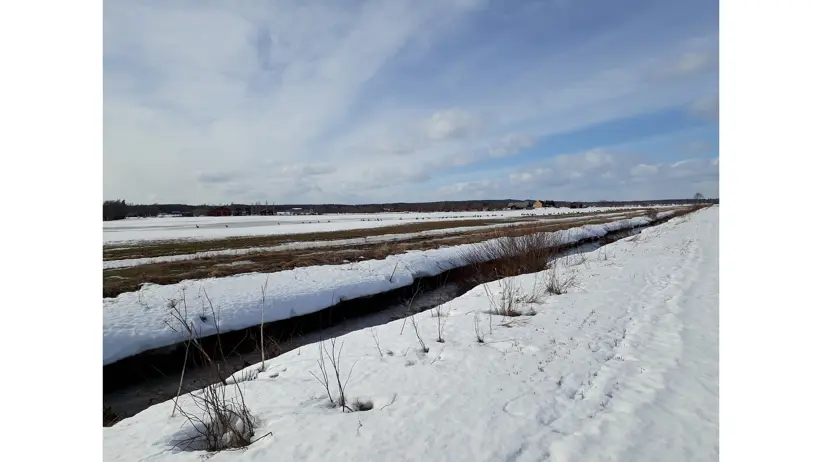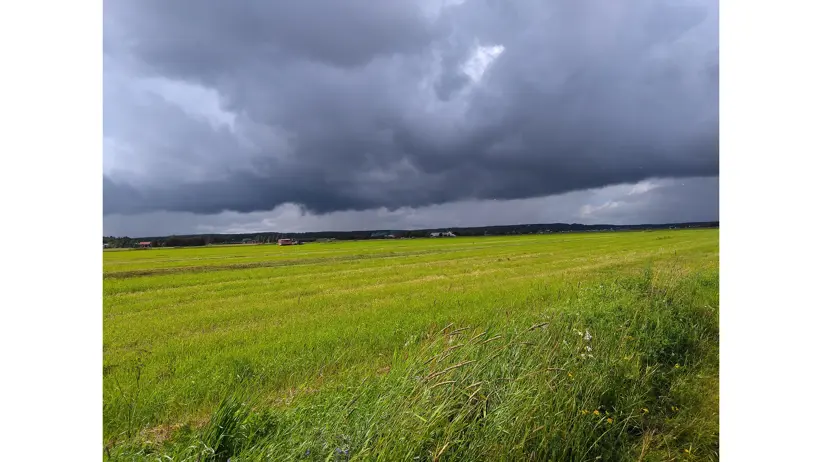SITES Röbäcksdalen
SITES Röbäcksdalen represents an agricultural landscape where animals are included (e.g. manure, leys, pasture). We offer good possibilities for studies on sustainability, effects of climate change and agroecology in farming systems containing animals.
SITES (Swedish Infrastructure for Ecosystem Science) is a nationally co-ordinated infrastructure for terrestrial and limnological field research. The network extends throughout Sweden including field research stations with different ecosystems and climatic zones - from agriculture lands, forest, cultivated forest to mires, streams, lakes and alpines. The collaborating research stations provide access to facilities and openly available data.
The infrastructure at Röbäcksdalen has excellent conditions for teaching, research, and applied studies in crop production, soil science, climate studies, feeding of forages, and ecosystem studies in an agricultural environment.
Urban agriculture
Röbäcksdalen represents a district of Umeå, the largest city in Norrland. Röbäcksslätten, the dominant part of Röbäcksdalen, is the largest continuous agricultural land area in northern Sweden. The urban location of the infrastructure opens up opportunities for interdisciplinary research and other research disciplines outside of natural science.
Facilities for science
Situated on 280 hectares of arable land, Röbäcksdalen’s facilities include a crop research infrastructure and a research dairy barn, enabling research into integrated crop-livestock systems. The station’s infrastructure supports research on a wide range of subjects, e.g. agricultural sciences, animal science, biology, agroecology, soil science, and the environmental implications of agriculture.
Röbäcksdalen provides support for field research trials and offers open data on long-term agricultural production, water quality, spectral measurements, and weather. Visitors and users of the infrastructure can get access to the land and a stream collecting drainage and surface runoff-water from the area, animals in the dairy facility, workshops, machines, measuring equipment, personnel, laboratories and working stations.
SITES Water
In SITES water we collect information from lakes and streams. At Röbäcksdalen two creeks, Degernäsbäcken and Röbäcken, are used for sampling.
Degernäsbäcken and Röbäcken run through our agricultural lands, past the airport, and then merge with the Umeå river. Through SITES water we collect data on water balance and water chemistry at four sampling locations. The sampling locations are strategically placed to represent Röbäcken before it merges with Degernäsbäcken, at the merging point of the two streams, and downstream from the merging point. Sampling points also represent locations in the stream before it passes through the agricultural landscape and as it runs through Röbäcksdalen’s fields.

SITES Spectral
The SITES spectral monitoring program captures the seasonal and ion between year variation in the vegetation of different ecosystems. The data is relevant for different processes in the ecosystems, e.g. productivity and light use efficiency.
The SITES spectral program is focused on a number of different spectral measurements, background data, and some phenological data. We have two masts at Röbäcksdalen, 4 and 10 m high, which continuously measure the growth using NDVI sensors. There are also phenological cameras on the masts, which takes a picture every 30 min. In addition, we fly the areas with drones equipped with two different cameras regularly during growth season. From 2025 there will also be manual phenology observations in the fields, where type of crop and growth stage is observed.
In addition to the data collected through SITES spectral, users also have access to a Specim SWIR hyperspectral camera.

SMURF
SITES SMURF is an ongoing monitoring program at Röbäcksdalen that was established in 2013. The dataset provides long-term information on conventional agricultural production in northern Sweden.
SMURF (SITES Monitoring of Umeå’s Research Fields) focuses on monitoring the production of conventional agricultural systems in northern Sweden. Using the 280 hectares of land at Röbäcksdalen, data is collected on land use, agricultural management, yield, and nutritive value of the harvested crop. The dataset will soon be available on the SITES data portal, but in the meantime, researchers interested in using the dataset can contact Brooke Micke.

Access to data
All data that is gathered within the infrastructure can also be made available for researchers. Most of the data is continuously collected and can be accessed through the SITES data portal: https://data.fieldsites.se/portal/.
Contact
-
PersonBrooke MickeDept. of Crop Production Ecology, Crop production science
-
PersonHåkan NilssonDept. of Crop Production Ecology, Röbäcksdalen research station